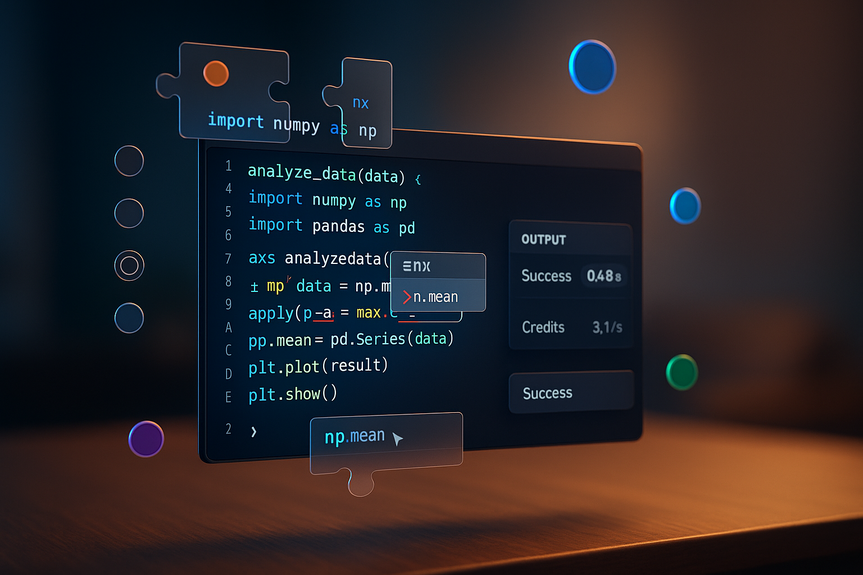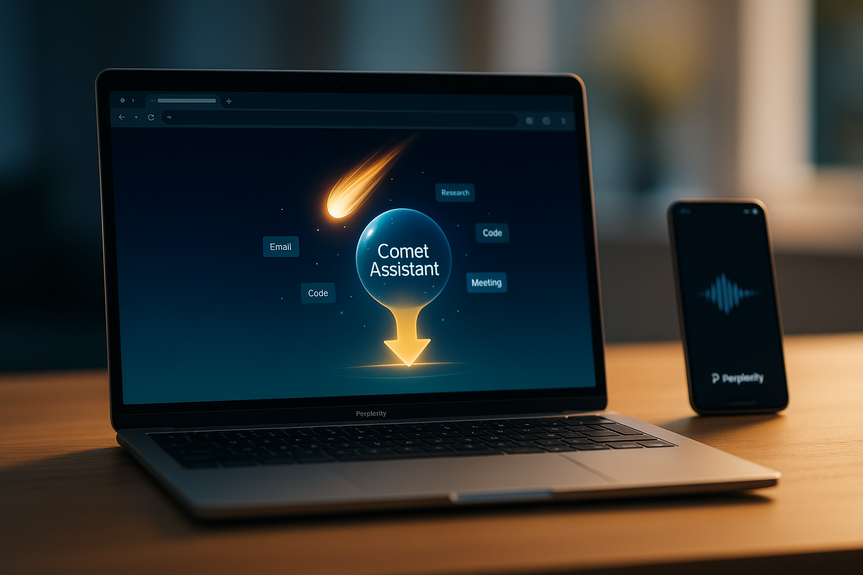
AI News
01 Dec 2024
Read 5 min
AI Tools Driving Criminal Activity and Ransomware Threats in 2024/2025
AI is reshaping cybercrime in 2024, enabling faster attacks, smarter phishing, and tougher ransomware threats.
How AI Tools Are Changing Cybercrime in 2024/2025
Artificial intelligence has become a powerful tool for both good and bad purposes -AI-driven cybercrime. Unfortunately, cybercriminals are using AI to develop more effective ransomware and conduct sophisticated attacks. These advancements are making it harder for businesses and individuals to stay protected.
AI Helps Hackers Work Faster
AI is improving the speed and efficiency of cybercriminals. It helps them create malware and ransomware quickly, without needing advanced programming skills. AI-powered tools can:
- Auto-generate malicious code for attacks
- Identify vulnerabilities in networks with ease
- Automate attack strategies without manual effort
This means hackers can launch more attacks in less time. Even criminals with limited technical knowledge can carry out damaging operations by using AI tools.
The Role of AI in Ransomware Attacks
Ransomware attacks involve encrypting victim files and demanding payment for decryption. AI is making these attacks more dangerous by improving their methods. For instance, AI-enhanced ransomware can:
- Bypass traditional antivirus systems
- Choose high-value victims through machine learning
- Optimize ransom demands based on victim data
These developments make ransomware more difficult to detect and mitigate, which increases the risks for businesses and organizations.
Social Engineering Enhanced by AI
Social engineering tactics trick victims into sharing private information. AI tools empower attackers to mimic humans more convincingly. For example:
- Chatbots powered by AI can impersonate customer service representatives
- AI algorithms can craft personalized phishing emails
- Fraudsters can use voice synthesis to clone someone’s voice
This makes phishing scams and fake communications harder to distinguish from legitimate ones.
Machine Learning Identifies Weak Targets
AI uses machine learning to analyze data and find weak targets. Cybercriminals can input data into AI systems to identify:
- Small businesses with poor cybersecurity
- Employees who are likely to fall for phishing attacks
- Outdated software vulnerable to exploitation
This targeted approach increases the success rate of attacks and reduces wasted effort for criminals.
The Global Impact on Organizations
AI-driven ransomware and cybercrime impact organizations of all sizes. Companies face severe consequences due to these attacks. Common effects include:
- Financial losses from ransom payments
- Reputation damage after data breaches
- Legal penalties for inadequate security
- Operational downtime caused by encryption
Small and medium-sized businesses are especially at risk. They often lack the resources to defend against AI-driven threats or recover from attacks.
The Rise of Ransomware-as-a-Service
The availability of ransomware-as-a-service (RaaS) platforms is growing. These platforms let criminals rent malicious ransomware software in exchange for payment. With AI integration, RaaS tools are becoming more effective and accessible. This trend could lead to a surge in ransomware attacks.
How to Defend Against AI-Driven Cybercrime
While the rise of AI-powered attacks is alarming, there are steps organizations and individuals can take to reduce risks. Prevention and preparation are key to mitigating the damage.
Invest in Advanced Cybersecurity Solutions
Organizations need to upgrade their security tools to match current threats. Advanced solutions may include:
- AI-powered threat detection systems
- Behavior-monitoring software to spot anomalies
- Regular vulnerability scans and updates
Using these tools can help spot and block threats before they cause harm.
Focus on Employee Training
Employees are often the weakest link in cybersecurity. Training can help them avoid falling victim to social engineering and phishing attacks. Effective programs should teach employees to:
- Recognize and report suspicious emails
- Avoid clicking on unknown links or attachments
- Use strong, unique passwords for each account
Ongoing education is essential to maintain security awareness as threats evolve.
Back Up Data Regularly
Regular data backups are critical for limiting the impact of ransomware attacks. Organizations should:
- Store backups in secure, offsite locations
- Set up automated backup systems
- Test backups frequently to ensure they work
In the event of an attack, having reliable backups can help restore systems without paying a ransom.
Adopt a Zero-Trust Framework
A zero-trust approach assumes no user or system is automatically trustworthy. This limits the potential damage if one part of the network is breached. Features of a zero-trust model include:
- Strict user authentication controls
- Segmentation of networks to isolate compromised areas
- Constant verification of permissions and activities
This approach reduces the risk of widespread impact from AI-driven attacks.
The Future of Cybersecurity
As AI tools become more advanced, cybercriminals will continue to adapt and exploit them – the AI-driven cybercrime. To stay ahead, businesses and governments must prioritize securing their systems and educating their teams. Collaborative efforts across industries will be required to create a safer digital environment.
Balancing Innovation With Security
AI offers many benefits, but its misuse has severe consequences. Companies investing in AI technology must also invest in strategies to prevent its exploitation. Striking this balance will be critical for protecting users and systems in 2024/2025 and beyond.
(Source: https://www.helpnetsecurity.com/2024/11/29/ai-tools-ransomware/)
For more news: Click Here
Contents






